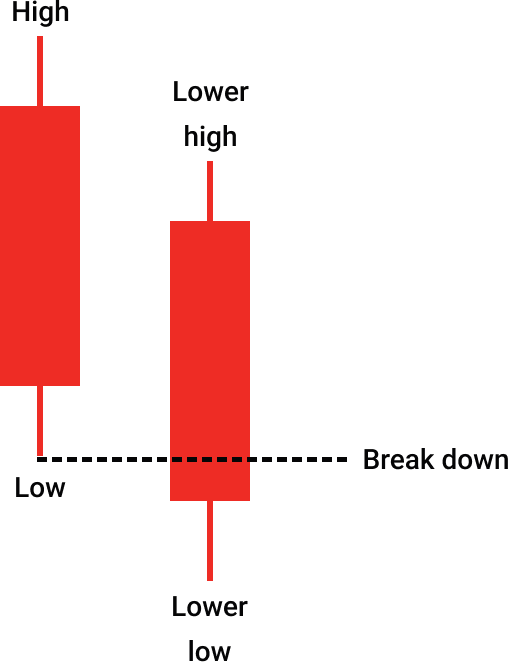✤ Setup Conditions:
✤ Red to red breackout
1. 1st candle’s close must be less than 1st candle’s open, it means 1st candle is a bearish candle.
2. 2nd candle's close must be less than 2nd candle's open, it means 2nd candle is a bearish candle.
3. 2nd candle’s low must be less than 1st candle’s low, it means 2nd candle has a lower low.
4. 2nd candle’s high must be less than 1st candle’s high, it means 2nd candle has a lower high.
5. 2nd candle’s close must be less than 1st candle’s low, it means 2nd candle is a breakdown candle.
✤ Green to red breackdown
1. 1st candle’s close must be greater than 1st candle’s open, it means 1st candle is a bullish candle.
2. 2nd candle's close must be less than 2nd candle's open, it means 2nd candle is a bearish candle.
3. 2nd candle’s low must be less than 1st candle’s low, it means 2nd candle has a lower low.
4. 2nd candle’s high must be less than 1st candle’s high, it means 2nd candle has a lower high.
5. 2nd candle’s close must be less than 1st candle’s low, it means 2nd candle is a breakdown candle.
✤ Breakdown
✤ Definition
☛ A breakdown happens when the price moves below a key support level or trading range, signaling potential downward momentum.
✤ Characteristics
☛ The price falls below a previously established low (support level).
☛ It is usually accompanied by high trading volume, confirming the bearish sentiment.
✤ Implications:
☛ Indicates bearish sentiment and the likelihood of further declines.
☛ Traders often enter short positions or sell holding when a breackdown is confirmed.
✤ Example:
☛ If a stock has been trading between ₹100 and ₹120, a breakdown occurs when the price falls below ₹100.



